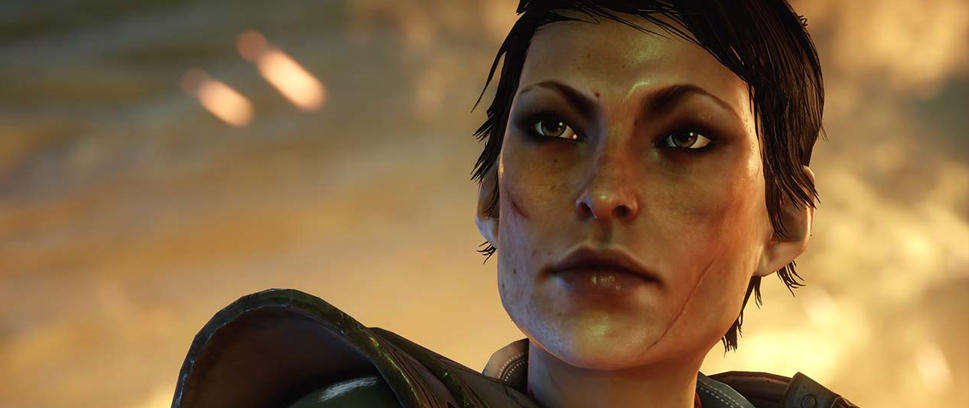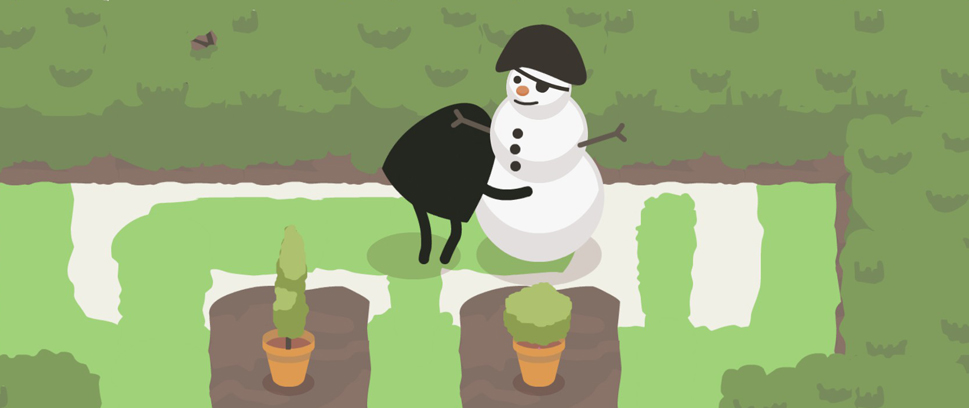
Interactive Thinger
The following is a reprint from Unwinnable Weekly Issue Thirteen. If you enjoy what you read, please consider purchasing the issue or subscribing for the a month.
———
1.
The first videogame I remember playing is Smurf: Rescue in Gargamel’s Castle on my family’s ColecoVision, back in the early 80s. Videogames were a family affair back then – I recall that my parents, two aunts, one uncle and my cousin were all there the first time Dad hooked the big ugly box up to the television. I remember a bunch of other games, too – Q*Bert, Ladybug, Zaxxon, Venture (which scared the crap out of me), Cosmic Avenger – but I have no idea if they were there that night.
I just remember the finicky jumps in Smurf killing me repeatedly.
I still can’t get more than a few screens into Smurf without wanting to smash the awkward walkie-talkie-like ColecoVision controller. This is probably an excellent metaphor for my lifelong experience with the videogame industry.
2.
A few years later, we got our first personal computer, a sleek little Apple IIc with a bright green monochrome display. Most of the games I played on it came by way of monthly diskette magazines – do you remember these? We got UpTime: on one side of the 5.25” floppy disk, there were stories and applications; on the flipside, there were always one or two little games for me to play.
We had some regular games, too, like a bizarre puzzle game called Saracen, whose box cover promised…I don’t know exactly…but what I got wasn’t it. I also had the pulpy but incredibly difficult Captain Goodnight and the Islands of Fear to make me want to bang my head against the keyboard. Mostly, though, I played text adventures like Zork and Transylvania while being jealous of my friend’s Commodore 64 (I thought Knight Games was the best thing in the world in those days).
I never finished any of those games until I played through an HTML version of Zork on a slow day at the Daily News seven years ago.
3.
The kid across the street had an Intellivision. The only game I remember playing on it was Pitfall. I didn’t like it very much.
4.
I got an NES the summer of 1986 but it didn’t really light my fire until I got Legend of Zelda as a Christmas present later that year and Metroid the following summer. Sweet Jesus, those were some fine games. I’d plot out my progress on graph paper when I’d been shooed away from the television and pour over the illustrations in the manuals when I went to bed.
The NES era marked an important point in my history because it was a near-universal system. Six, count them, SIX kids on my block had the console. The local movie rental shop, Video Tonite, had cartridges on the shelves. Nintendo Power came to my door once a month. For the first time, videogames weren’t broken up into the dialects of whatever weird system your parents bought. Everyone in the playground was playing the same games. We could even trade and borrow them.
This is the first time I heard about the Konami code in Contra. One minute, we are in the yard at Schuyler Elementary School, swapping M.U.S.C.L.E.S., the next this one kid says he heard from his older brother whose friend told him there was a secret way to get 30 extra lives in the game. What a liar, right? We spent that summer drawing levels for Contra II on loose lead paper.
You might have done the same thing, but ours were cooler. We had a brontosaurus with missile launchers mounted on its back.
5.
I never had a Sega Genesis, Atari, Super NES, TurboGrafx 16 or NeoGeo.
6.
Around 1990, the Apple IIc was getting long in the tooth. Dad replaced it with a monstrous IBM and its orange monochrome screen. It was the first in a blurry series of PCs – Dad’s part time help at the garage was a computer scientist, so upgrades happened all the time. Thanks to Dave, I also had a steady supply of games to try out. My memories of Sierra adventure games like King’s Quest and Space Quest play out in orange and black.
The computer at home was less impressive than the one at the office of dad’s shop. Among other things, that one had a color CRT monitor, so on some weekends my parents would drop off at the shop for a few hours to play Might & Magic III, Rise of the Dragon or some other graphically intense game.
Eventually, I tried building my own computer with parts I ordered from a gigantic mail-order catalog. When I inevitably messed it up, Dave came over and fixed it. When he was done, he popped a disk labeled Wolfenstein in the drive. He told me, conspiratorially, “You’re going to love this. You get to kill Nazis.”
7.
I played my share of shooters after Wolfenstein – Doom, Heretic, Hexen and on – but I split the bulk of my time with RPGs, like SSI’s Dungeons & Dragons games and Elder Scrolls, and clinging to the increasingly rare, weird permutations of the adventure genre, from Tex Murphy to Gabriel Knight to Grim Fandango.
I could endlessly list oddball I played and loved (Betrayal at Krondor and Ripper immediately come to mind) but during these years, videogames began to develop an increasing commonality. As players, we began to collectively recognize universal touchstones. Genre conventions began to coalesce. The internet allowed communities to form. The weirdo games were still out there, but for every Last Express there was now a Warcraft 2, a megagame that everyone played and everyone wanted to talk about.
I bought my PlayStation specifically to play Final Fantasy VII. From that point, I have a good record of playing the Very Important Games. You’re already thinking about some of them. Baldur’s Gate, Metal Gear Solid, Planescape: Torment, Legacy of Kain, Silent Hill, Fallout…
8.
Aside of Nintendo Power and the game reviews in Dragon Magazine, I never read games journalism before I started doing this professionally.
9.
This is the autobiography of a player of games. It stretches back a number of years, though not as many as some. It perhaps contains some funny notions unique to the generation that grew up before the internet changed the world. I imagine, though, that the funny notions I got growing up around the family and friends fate stuck me with are far more important. My funny notions are no better or worse than your funny notions, though. They simply exist as a set of unique values and perceptions through which reality filters.
You can call this taste, or personal aesthetics, or what have you. Having read this, you have seen how chance, skill and preference have conspired toward my liking a particular sort of game while avoiding others. This doesn’t make those games inherently good, or bad, to anyone other than me.
However, through listening to other people, challenging my preconceptions and striving to experience new things, I can learn what other people enjoy about the games I dislike (and hate about the games I love). I can even learn to like those games myself, the same way I trained myself to appreciate whisky and black coffee.
Sometimes this creates a consensus. That’s why everyone seems to adore The Last of Us even though it left me only lukewarm. On the other hand, most people think Fable III was a clunker – I happen to disagree. I suck at Street Fighter and am a whiz at Soul Calibur. I have a CheatHappens account that I use to break into the gooey candy core of games I don’t feel like playing seriously.
I don’t lose sleep over not being in the majority. It is just a quirk of my tastes.
10.
When I was young, games occupied an intermediate space. They were too free to be like books or movies, but too rigid to be like playing pretend with the kids on the block. At the same time, they were also flexible. I could imprint my own make-believe on to games – games like Metroid had only hints of stories that I could be expand on in my mind’s eye while grinding through the levels. I could also make them more rigid by imposing rules that existed outside the game, like playing through Contra without upgrading weapons.
As I grew older, games I enjoyed swung firmly into the narrative spectrum, consciously aping the conventions of other mediums. Then there was the rise of the ultra-realistic game that was fun for a while. Then BioShock changed everything by subverting what a player should expect out of a game narrative, blowing my mind in the process. Then came Braid and the indie games, the deconstructions, the experiments.
Are videogames today anything like the games I played when I was four years old? Can we apply a definition more precise than ‘interactive digital systems’ that accurately describes games as diverse as Zork, Asteroids, Super Mario Bros., Dear Esther, Dys4ia and Heavy Rain? No. Even if we could, would it still apply in five years?
11.
How would you define yourself, right now? How different is that definition from when you were four years old? How will it change in two decades? At what point are you truly you? When are you counterfeit?
How many times have you given up something you thought would define your entire life?
How many things have you done that you never thought you would?
How many times have you changed without even realizing it?
“I don’t know,” is an acceptable answer for all of these questions.
12.
The nature of interactive media gives games an inherently chaotic core. There is no right way to play, so they themselves remain fluid. Mercurial. Defying our expectations of them. They are artifacts defined by preference.
Like the way I will do my best to sneak around in a game that doesn’t have stealth mechanics. Or the way Chuck constantly leaves the pack to explore on his own in co-op games (you know, like Left 4 Dead). The developers themselves don’t even know what their games will do once they set loose in the wild – just look at World of Warcraft’s Corrupted Blood plague or the way Gears of War players would use boom shields to build makeshift fortifications in Horde Mode.
Because games are interactive, they are inherently malleable. The nature of the game is dependent wholly on the player(s). If there isn’t one objectively true way to play a game, then there can be neither an objectively true game, nor an objectively true player.
In recent months, I have become enamored of the term ‘interactive thinger.’ The broader the definition, the better, really – it removes a lot of aesthetic hang-ups when you decide practically everything outside of the 9 to 5 grind is play. That way, I can think about board games and pen and paper RPGs and folk games in the same way that I think about videogames, and vice versa.
Games aren’t like Platonic solids or animal species. I cannot force them into rigid taxonomies or define them by obsessively cataloging criteria. I can just enjoy them, and wonder why.
13.
The game I have played the most obsessively this year is Threes.
Oh, and Mountain has been running on my desktop for weeks now.
I can’t forget Shadowgate.
And Dungeon of the Endless.
And my secret binges of Crusader Kings 2.
And the Gabriel Knight remake.
And…
———
Follow Stu Horvath on Twitter @StuHorvath




